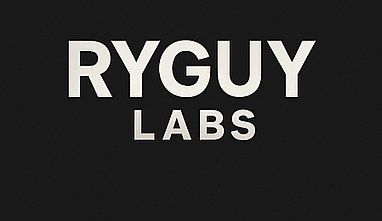Overcoming Objections
Proven Scripts, Real Stories, and the O.F.F.E.R. Framework™ to Turn “No” into “Not Yet”
Handling objections doesn’t mean bulldozing past resistance—it means uncovering reasons and navigating them with understanding and clarity. Every objection is a hidden “yes”, waiting to be revealed.
“A ‘no’ isn’t a wall—it’s often just the door to the deeper conversation.” — RyGuy
Let’s walk through why objections happen, how to use your O.F.F.E.R. Framework™, and how real reps in the industry have turned “maybe not” into “let’s go.”
Why Objections Aren’t the Enemy
Objections pop up for four main reasons:
- Lack of clarity – They may not fully get how your solution helps.
- Lack of urgency – Timing feels off to them.
- Lack of trust – Skepticism about your promise or your brand.
- Lack of alignment – They need something slightly different.
Understanding which one you're facing lets you tailor your response—not force a sale.
The O.F.F.E.R. Framework™
When an objection happens:
- Observe – Let them speak. Don’t jump in.
- Frame – Acknowledge the concern: “It sounds like you’re not sure this fits right now.”
- Flip – “Fair enough—but if X were true, would that change your mind?”
- Empathize – “Others felt the same way until they tried it.”
- Reposition – Share a proof point or story that reframes the value.
Real-World Stories That Drive It Home
-
HubSpot’s Quirky Objections Turned Mindset Wins
Some prospect once complained their CRM's font was too small—a totally tech-level concern. HubSpot’s rep gently reframed it, reminding them that broader usability is a universal issue, not just theirs. By staying calm and human, they kept the conversation on track. HubSpot Blog -
Listen, Don’t Script—Convert with Curiosity
Austin tech sales teams shared that the magic trick isn’t throwing rebuttal lines—it’s asking questions. One rep aimed to ask two follow-up questions before responding to objections—one simple rule that turned several “no’s” into “tell me more.” Built In Austin -
The CEO Fear of Disruption—Handled with Empathy
A salesperson pitching digital transformation heard: “Implementation will disrupt our operations.” They responded with empathy, shared a phased rollout case study, and offered a trial. The result? A deal and a 25% efficiency gain for the client. Eubrics
Your Scripts, Powered by O.F.F.E.R.™
| Objection | O.F.F.E.R. Response |
|---|---|
| “It’s too expensive.” |
O: “I hear you—budget’s a big deal.” F: “Sounds like it’s a stretch right now?” F: “What if the ROI covers this in under 3 months?” E: “I get that—you’re investing smart. Others saw returns fast.” R: “One client saw 20% lift in pipeline in 60 days—a real value win.” |
| “Need to think it over.” |
O: “Makes sense.” F: “Curious—what part needs air time?” F: “Is it price, A/B fit, or something else?” E: “Most of us mull it over too—it’s a big choice.” R: “I can send a quick comparison or case study if it’d help.” |
Objection Response Generator
Need a new way to handle an objection? Get a custom response powered by the O.F.F.E.R. Framework™.
Subtle Tie to the C.A.L.L. Framework™
Handling objections well is where your C.A.L.L. Framework™ really delivers:
- Context: Objections tell you where the prospect is stuck.
- Attention: Thoughtful responses keep them engaged.
- Leverage: Real stories and ROI data shift the conversation.
- Lift-off: You respectfully guide them back toward a confident yes.
Curious for more? The full framework, worksheets, and objection scripts await in our [Products Page].
You Got This with RyGuyLabs
“Objections aren’t stop signs. They’re roadmaps.” — RyGuy

